
Are you a marketer or e-commerce business owner and are familiar with CTAs but unsure how to effectively use or craft the best call to action for your online business? If yes, this blog is just for you. It will define what a call to action is and provide effective examples. We’ll delve into how calls to action function in digital marketing and social media platforms like Facebook and Instagram.
What is CTA (Call To Action)?
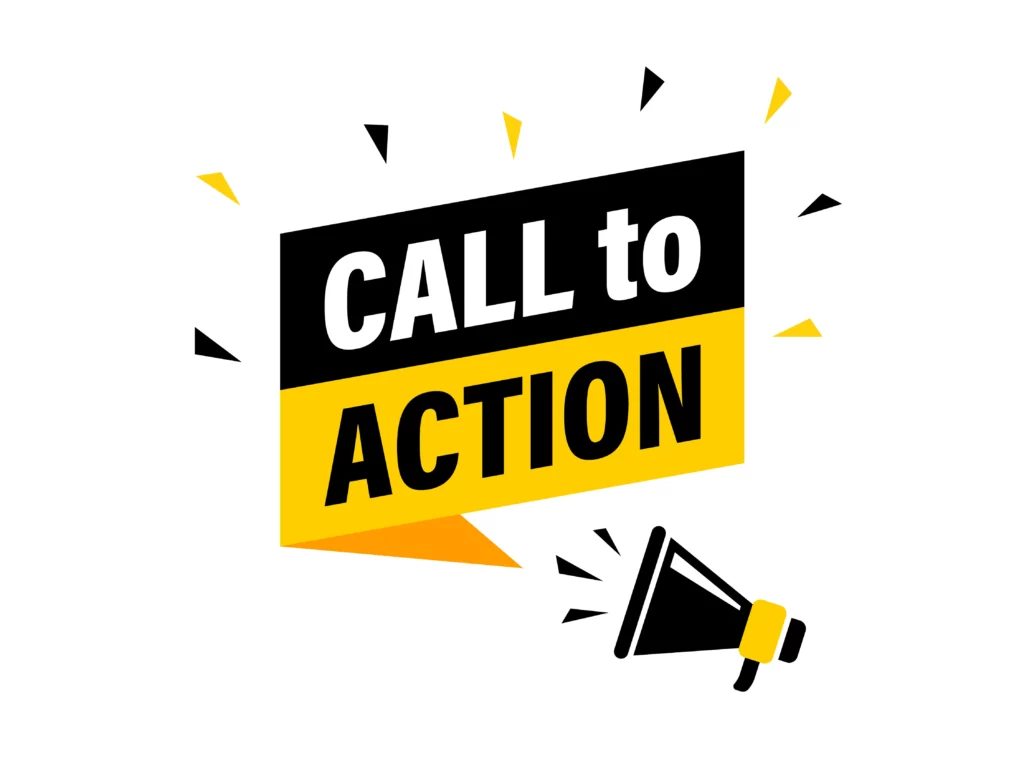
CTA stands for “Call to Action.” It refers to an element within a piece of content, typically a prompt or directive, aimed at encouraging the audience to take a specific action. Call to action meaning in short: a marketing term that refers to a prompt or instruction that inspires or motivates a person to take a specific action. CTAs are often used in marketing materials, websites, or advertisements to guide users towards actions like “Sign Up,” “Buy Now,” “Learn More,” or “Subscribe.” They are designed to prompt immediate response or engagement from the audience.
The Importance of Call To Action – Words For Motivation

We’ve discussed the definition of CTAs, but why are they so important? In simpler terms, what’s the significance of calls-to-action? Although numerous reasons exist, here are the top two:
Guiding your audiences with words of motivation:
If you don’t tell your audience what to do next, there’s a good chance they won’t do anything. Without a ‘’Click Here’’ or “Buy Now” button at the end of your sales page, your customers won’t know how to make the purchases of what they are intended to buy.
You have to tell your audiences where to go, with call to actions you are using the right tools to guide your audiences to the right direction. By using simple but bold words not only do you motivate your audience to continue the process of their online actions but you also captivate their attention. Without a “Read Now” link in your email, your subscribers won’t know where to continue reading your new blog post. When an audience feels like there’s any confusion at all, 99% of people will simply click away.
When visitors encounter confusion on a website, it’s remarkably easy for them to lose interest and motivation. Confusion disrupts the user experience, leading to frustration and a lack of clarity about how to navigate or achieve their intended goal. This often results in a decline in engagement, as users are more likely to lose interest and abandon the website, seeking alternatives that offer clearer instructions or a smoother browsing experience. That is the main reason that CTAs (Call to Actions) play a crucial role in capitaving your audiences. By reducing confusion on a website by providing clear guidance and direction to users. They serve as signposts or prompts, guiding visitors on what actions to take next. By strategically placing CTAs at relevant points within the content or website interface, users are given specific instructions on how to proceed, whether it’s making a purchase, signing up for a service, accessing more information, or navigating to the next step.
Let’s Simplify It! CTAs help in the following ways:
- Clarity: CTAs offer clear and direct instructions, reducing ambiguity and guiding users on what action to take next.
- Focus: They draw attention to specific actions, helping users stay focused on their intended goal or objective.
- Navigation: CTAs act as navigation aids, guiding users through the website’s structure or funnel, making it easier for them to find relevant information or complete desired tasks.
- Engagement: By prompting users to take action, CTAs encourage engagement and interaction with the website, enhancing the overall user experience.
CTA Marketing
CTA marketing refers to the strategic use of “Call to Action” elements in marketing materials to prompt specific actions from the mass audience. This technique aims to encourage immediate responses from users, guiding them towards taking a particular action, such as signing up for a newsletter, making a purchase, downloading content, or engaging with a website. CTA marketing focuses on creating compelling and persuasive messages or visuals to prompt desired user actions, ultimately driving conversions and engagement for businesses or brands. In essence, a call to action is a method used to inspire and motivate users to click on links or engage with content, aiming to capture and captivate the audience’s attention and prompt them to take specific actions. CTAs are a fundamental tool within marketing to drive user engagement, conversions, and overall campaign success.
CTA in Digital Marketing

In digital marketing, a Call to Action (CTA) refers to a specific prompt or directive strategically placed within digital content to encourage immediate action from the audience. CTAs are typically clear, concise, and action-oriented phrases, buttons, or links designed to guide users towards taking a particular action, such as:
1. Making a purchase
2. Subscribing to a newsletter
3. Signing up for a service or event
4. Downloading content (e.g., ebooks, guides)
5. Contacting or requesting more information
6. Sharing content on social media
CTAs are vital in digital marketing campaigns across various platforms, including websites, emails, social media posts, ads, and landing pages. Effective CTAs are tailored to the target audience, aligned with the content, and stand out visually to attract attention. They play an important role in driving user engagement, increasing conversions, and achieving the desired goals of a digital marketing campaign.
CTA Social Media Instagram and Facebook
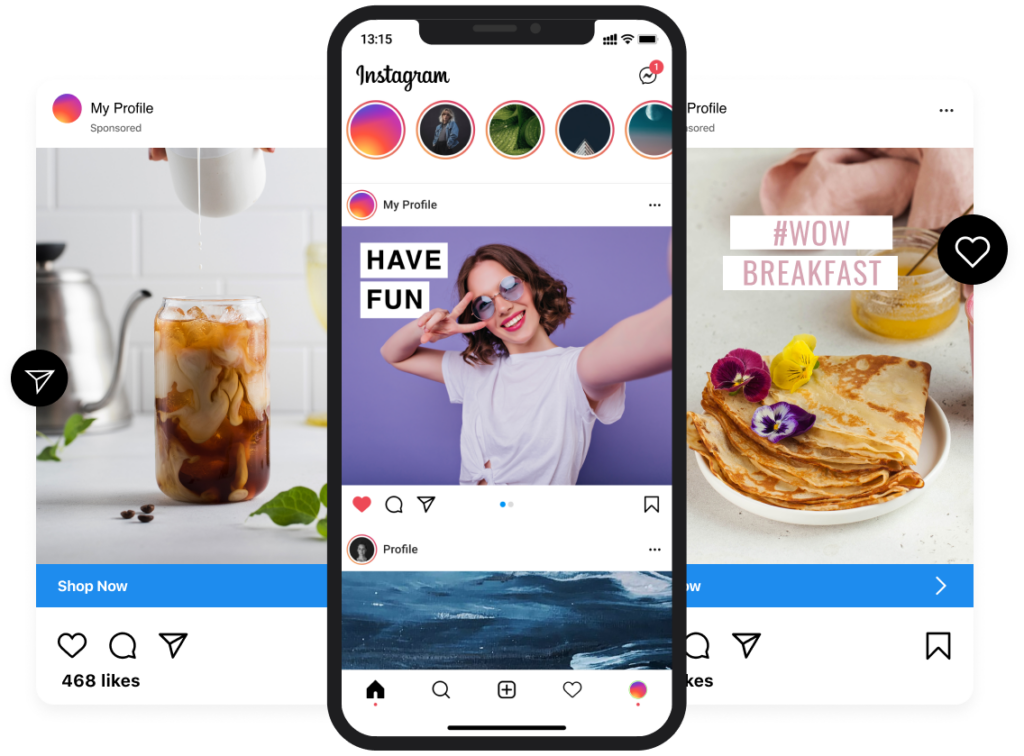
CTAs (Call to Actions) on social media platforms like Instagram and Facebook serve as prompts encouraging users to take specific actions. These CTAs are strategically placed on posts, ads, profiles, or stories to guide users towards engaging with the content, exploring further, making a purchase, signing up, or taking any specific action desired by the marketer or business. They play a vital role in driving user engagement and conversions on these social media platforms.
Instagram Call To Action And Their Meaning
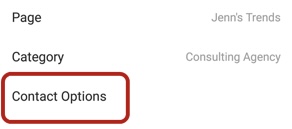
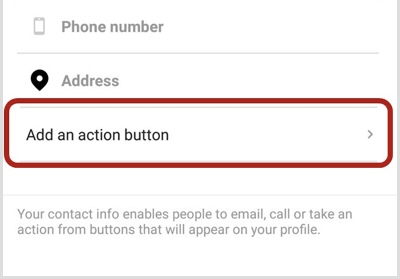
CTAs can take many forms, such as “Shop Now,” “Learn More,” “Sign Up,” “Swipe Up,” and they can be added to your posts, videos, stories, ads, or reels. These are tools that Instagram provides for users to be able to easily and professionally engage with their audiences. These call to actions are designed to captivate audiences and motivate them to click and navigate them to the webshop to buy the product or service.
Instagram Call To Action Examples
Instagram CTAs examples are used to engage with your audience. These CTAs are tailored for Instagram posts and carousels:
- Engage and Connect:
– “Introduce yourself! Drop a comment with your name and what you do.”
– “Swipe through to discover all my highlights.”
– “Browse the comments and connect with others in the community.”
- Interactive Questions and Responses:
– “Choose your favorite [Option #1] or [Option #2] !”
– “How many items from the list can you tick off? Share your thoughts in the comments.”
– “Drop the right answer in the comments (and swipe right for the correct one!).”
- Encouraging Actions:
– “📌 Save this post for later!”
– “Share this post in your story and tag me!”
– “Tag someone who needs this reminder!”
- Directing to Bio Links:
– “Head to the link in the bio for [Topic].”
– “LINK IN BIO: 🔗 [Your IG @]”
- Encouraging Engagement:
– “Drop a 💖 in the comments if you agree!”
– “Share this post if you feel seen!”
– “Who else resonates with this feeling? Share your thoughts!”
- Promoting Launches or Offers:
– “Tap the Link in our Bio to sign up and get your discount!”
– “Stay tuned for our upcoming [Offer or Launch]’’
- Encouraging Saves and Reminders:
– “Save this post as a reminder for tougher times!”
– “Save this post if it resonates with you.”
Questions

Reveal a Quirk:
❓“Share one quirky fact about yourself!”
Stepping Out of Comfort Zones:
❓“When did you last step out of your comfort zone for good?”
Unpopular Opinions:
❓“Do you hold an unpopular opinion? Share it here!”
Struggles and Stories:
❓“Have you encountered difficulties related to [Topic]? Feel free to share your experience in the comments below.’’
Identifying Shared Struggles:
❓“Ever found yourself in this situation? Share your thoughts!”
Seeking Agreement:
❓“Do you agree? Let’s discuss!”
Eliciting Excitement:
❓“Are you as excited as we are?”
Facebook Call To Action And Their Meaning
Facebook CTA buttons provide a clear and direct prompt urging users on your page or ad to take a specific action. Their visually striking appearance distinguishes them from other content, contributing to an improved conversion rate. Reflect on the desired action you want visitors to perform and the reasons behind it. Consider the visitors’ requirements: Do they seek details about a new industry or product? Are they familiar with the product but need information about your company? Or are they fully informed and prepared to make a purchase?
Luckily Facebook already provides clear call to action buttons on their ‘’edit action button’’ found at the bottom of the screen on ‘’Stories Ad Placements’’ as they differ for each campaign objective you have to make sure you are making the right choice.
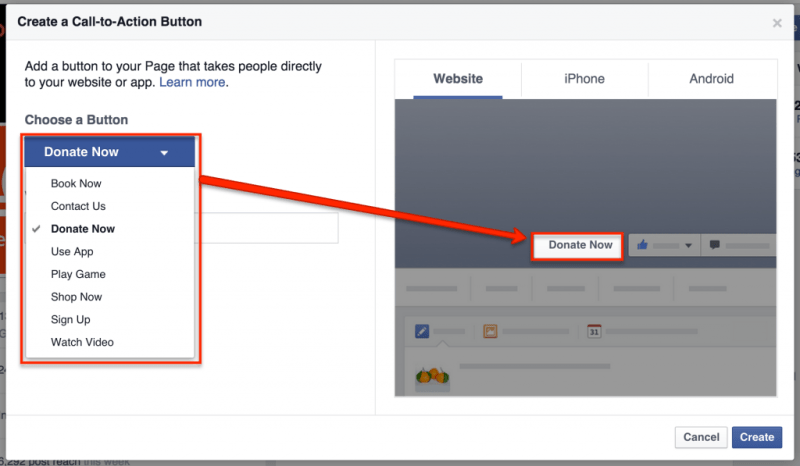
‘’Book Now’’
This CTA button works best for businesses that offer services by appointment.
‘’Contact Us’’
This CTA button is best for customers who are looking for more information about the product or service.
‘’Sign Up’’
The ‘’Sign Up’’ button is ideal for growing your email list with Facebook. This way customers can stay up to date on promotions or offers via email.
‘’Shop Now’’
This CTA promotes immediate sales through Facebook. It can be linked to your website or to a third-party app like Shopify, eBay, or Squarespace.
‘’Watch Video’’
By providing your potential customers with a video it’s a great way to provide information about the product or service. This also helps motivate and inspire trust between the customer and the sellers.
‘’Donate Now’’
This call to action is similar to the shop now as it provides actions to be taken in the ‘now’. This CTA button is for donations such as for charitable organizations.
‘’Learn More”
This CTA is the most general button as you can use it if you want to provide more information for a new product or something that requires more information before the customer decides to make a purchase.
Facebook Call To Action Examples
These Facebook CTAs aim to prompt engagement, spark conversations, and direct users towards actions that enhance interaction and connection on Facebook posts. Here are some effective Call to Actions suitable for Facebook:
Engagement CTAs:
– “Like this post if you agree!”
– “Comment your thoughts below!”
– “Tag a friend who needs to see this!”
Encouraging Shares:
– “Share this post with someone who needs a reminder!”
– “Share your favorite memory in the comments and spread positivity!”
Asking for Opinions:
– “What’s your opinion on this matter? Let’s discuss in the comments!”
– “Poll time! Which option resonates with you? Vote in the comments!”
Directing to External Links:
– “Discover more at [Your Website/Blog]. Click the link in our bio!”
– “Explore the full story in our latest blog post. Find the link in the comments!”
Promoting Engagement on Other Platforms:
– “Follow us on Instagram for more behind-the-scenes content!”
– “Join our community on [Other Platform] for exclusive updates!”
Offering Solutions or Tips:
– “Facing a similar challenge? Here’s a helpful tip in the comments!”
– “Struggling with [Topic]? Find a solution in our latest guide linked in the comments!”
Encouraging Reactions:
– “React with your favorite emoji to show your support!”
– “Embrace positivity! Show some love with your reactions!”
Creating Curiosity:
– “Curious to learn more? Stay tuned for our upcoming announcement!”
– “Big news coming soon! Keep an eye on our page for updates!”
How to Create The Best Call To Action in 7 Effective Steps
By following these steps and continuously refining your approach based on user behavior and feedback, you can create compelling and high-converting calls to action.
1. Clear and Actionable Text: Use concise, action-oriented language that clearly communicates what users should do (e.g., “Buy Now,” “Sign Up,” “Learn More”).
2. Placement and Visibility: Position the CTA prominently on your website or within content where it’s easily noticeable and accessible.
3. Design and Visual Appeal: Make the CTA visually appealing by using contrasting colors, compelling buttons, and eye-catching visuals that draw attention.
4. Relevance and Context: Ensure the CTA aligns with the content and provides value or relevance to the user based on their current context or needs.
5. Create a Sense of Urgency: Encourage immediate action by adding a sense of urgency or scarcity (e.g., limited-time offers, countdowns, or exclusive deals).
6. Test and Optimize: Experiment with different CTAs, placements, colors, and wording to analyze what resonates best with your audience. Use A/B testing to determine the most effective options.
7. Mobile Optimization: Ensure your CTAs are mobile-responsive and work seamlessly across various devices to reach a broader audience.